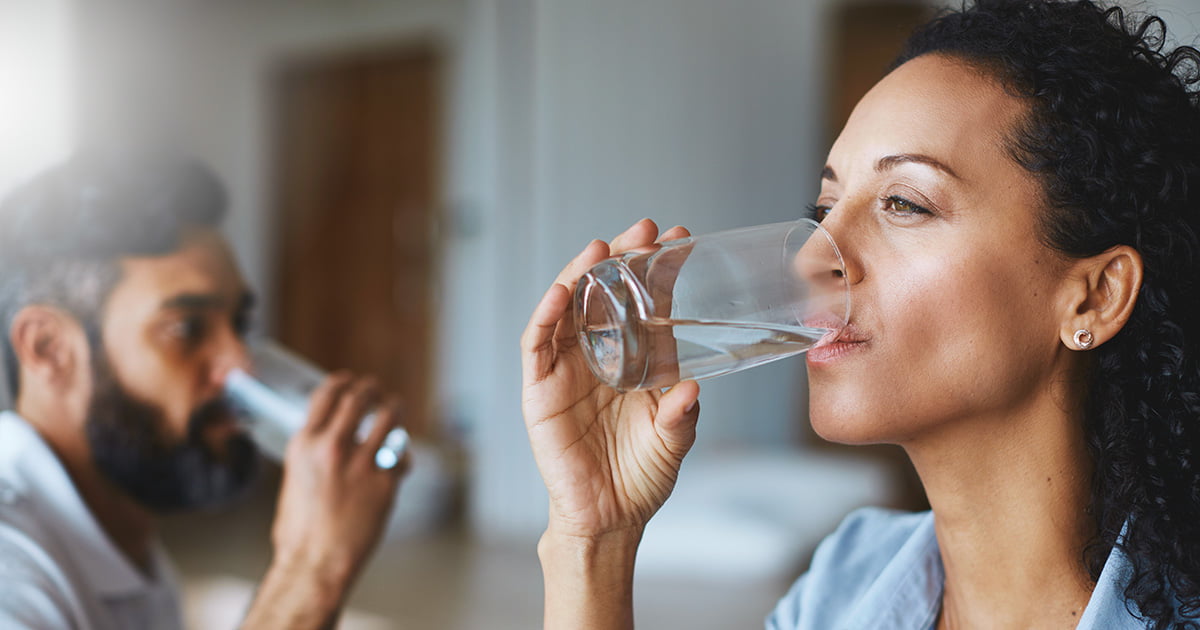
What’s the worst thing you can drink (among drinks that are supposed to be ok or good for you)?
- It’s not tap water
- It’s not bottled water
- It’s not alcohol
- It’s not soda (whether sweetened with sugar or artificial sweeteners)
- It’s not coffee
- It’s not vegetable oil and sugar
- It’s not a milkshake or smoothie
Tap Water
Tap water contains chlorine to disinfect it while it travels from the source through the urban water system’s old and leaky pipes to your tap. These old leaky pipes allow contaminants to enter the water supply. The contaminants could include almost anything, such as hydrocarbons from spilled jet fuel and gasoline, runoff from ranches, chicken farms, industrial farms (there’s a potential trace source of gluten!), and factories of all kinds.
Chlorine is beneficial for killing bacteria and some viruses while the water is traveling through the city water system to your tap. But it continues to kill bacteria when you drink it, thus damaging the human microbiome. Your microbiome is the protective beneficial bacteria that lines the epithelial tissue in your gut, from your mouth to your anus. Read more about your microbiome here.
Tap water may also contain sediment, lead from old city pipes, other heavy metals, viruses, traces of prescription drugs, traces of herbicides and pesticides, and just about any airborne pollution that settles on the water source or an open causeway that brings the water to your neighborhood.
Your public water system follows rules which limit many of these contaminants. You should understand how often exceptions are allowed and where in the supply stream the water is tested – at the source or at the tap. There can be a huge difference, as was evident in the continuing fiasco in Detroit and a few other major cities.
Bottled Water
Bottled water is generally delivered in plastic containers, which can leach all sorts of plastic chemicals and byproducts, especially if left in the sun or heat. These plastics are not inert, but can include endocrine disruptors, and other harmful hydrocarbon-based chemicals.
Bottled water is generally either filtered spring water or filtered city tap water. The two most popular premier brands – Dasani from Coca Cola Bottling Company or Aquafina from PepsiCo are both reverse osmosis (RO) filtered city water. But they do not filter out fluoride.
Alternative packaging of bottled water are aluminum cans, stainless steel jugs (which can leach nickel – a component of stainless steel), and breakable, heavy glass bottles. A recent alternative are silicone containers with a plastic mouthpiece. I like these collapsible containers, but if you ever put something flavored into it like a smoothie, it will retain the flavor for a long time.
If my only choice is bottled water, I prefer spring water in glass containers. Unfortunately, it is very expensive, the container is heavy and should be recycled, and not available everywhere. A second choice is surprisingly Dasani or Aquafina.
Alcohol
Who doesn’t like an adult beverage? Alcohol is hardly the way to stay hydrated, and we can talk about the benefits and flavors of so many alcoholic beverages, but alcohol is not a practical alternative to staying hydrated.
There is controversy over whether a daily glass of red wine is beneficial. Note the beneficial wines are the ones that are not laden with pesticides, so they develop their own innate protections such as resveratrol. They also have a very low residual mold content, and are generally imported, where the agricultural standards are far higher in almost any country than in the U.S. These are some of the reasons that people have less of a hangover from drinking imported wine than from domestic wine.
Soda
So much has been written about the health issues of soda consumption. I will just say that a drink laden with sugar or artificial sweeteners, artificial flavors, and carbonate is an all-around bad choice for you.
In my 20s and 30s I was addicted to soda, and of course had my favorite. I quit cold turkey after I read enough about the harm that soda can cause. No regrets! I haven’t looked back.
Coffee
What’s the harm in coffee? It’s a natural source of the drug caffeine, it’s highly addictive, and often grown using pesticides and herbicides.
One company uses organic coffee and puts butter from grass-fed cows in it and calls it healthy.
Vegetable Oil Drinks
Too many doctors recommend sweetened, fortified, vegetable oil drinks for the elderly. They’re a great mix of sugar-laden canola and corn oil fats, soy protein isolate, artificial flavors and colors, that can help someone put on fat if they are deemed not getting enough nutrition. They’re even “fortified” with small dose synthetic vitamins. It’s a cheap and easy-to-swallow way to mask some obvious symptoms of aging such as weight loss, muscle loss, and appetite loss.
Milk Shake or Smoothie
Even a real milkshake has some redeeming value. Though super high in natural fats and sugar, one could say that whole milk products are also loaded with natural micronutrients. It also brings such joy to treat yourself on rare occasions to a drink that is so decadent, sweet, smooth, cold, and may bring back great memories of childhood. A smoothie is a more modern version of this treat that may have beneficial fruit and vegetable micronutrients and fiber, natural protein powder, and herbs.
So, what’s the worst thing you can drink? Read part 2 to find out.

Leave a Reply
You must be logged in to post a comment.